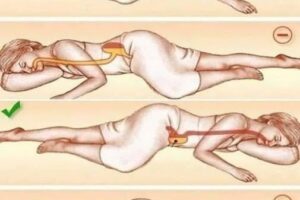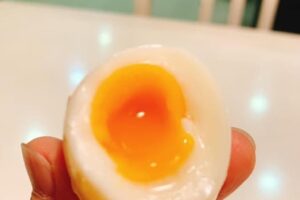Everything you need to know to keep your baby safe, cool, and rash-free during hot weather.
When summer temperatures climb and humidity levels rise, babies can become particularly vulnerable to skin irritations. One of the most common warm-weather concerns parents face is heat rash — a condition that may sound alarming, but is generally mild and treatable with simple home care.
If you’ve ever noticed tiny red bumps, blisters, or patchy rashes on your infant’s neck, back, or thighs after a warm day, chances are you’ve encountered a heat rash, also known medically as miliaria. While it might look uncomfortable — and sometimes is — it’s typically not dangerous. However, knowing how to recognize it, what causes it, and how to respond appropriately can help your baby stay cool, comfortable, and healthy.
Let’s explore in depth what baby heat rash is, how to identify it, the best ways to treat it, and how to prevent it from occurring in the first place.
What Is Heat Rash in Infants?
Heat rash is a skin condition that results from blocked sweat glands. Babies are especially prone to developing heat rash because their sweat glands are not yet fully developed, making it harder for their bodies to regulate temperature efficiently.
When sweat gets trapped beneath the skin, it can cause inflammation and lead to small bumps, redness, or irritation. These rashes tend to appear on parts of the body where heat and moisture accumulate — like the neck, chest, back, folds of the skin, and diaper area.
There are several types of heat rash, and while they can look slightly different, the underlying cause is the same: blocked sweat ducts that prevent sweat from escaping the body properly.
Types of Heat Rash
There are different forms of heat rash, which vary depending on the depth of the blockage within the sweat ducts:
-
Miliaria Crystallina
-
The mildest form, typically seen as tiny, clear, fluid-filled blisters that break easily.
-
Not itchy or painful.
-
Often occurs on the face, neck, or upper body.
-
-
Miliaria Rubra
-
The most common type in babies.
-
Causes red bumps, itching, and discomfort.
-
Appears in body folds or under clothing.
-
-
Miliaria Profunda
-
Less common in infants, more likely in adults.
-
Involves deeper layers of skin and appears as firm, flesh-colored bumps.
-
-
Miliaria Pustulosa
-
A more severe variant where pustules (pus-filled lesions) form.
-
May indicate infection or advanced irritation.
-
For most infants, miliaria rubra is the type of heat rash that occurs, especially during hot and humid seasons.
What Causes Heat Rash in Babies?
Several factors contribute to the development of heat rash in infants. These include:
-
Warm Temperatures: High environmental heat encourages sweating, which can overload a baby’s underdeveloped sweat glands.
-
Tight or Heavy Clothing: Overdressing your baby or using non-breathable fabrics like polyester can trap heat and sweat.
-
Swaddling: While swaddling helps babies feel secure, it can lead to overheating if done with thick blankets or in a warm room.
-
Prolonged Time in Car Seats or Carriers: Limited airflow in these enclosed areas can promote sweat build-up.
-
Fever or Illness: If your baby has a fever, their body naturally tries to cool down by sweating, increasing the risk of blocked sweat ducts.
-
Skin-to-Skin Contact in Humid Environments: While skin-to-skin bonding is beneficial, in hot climates it may increase sweat accumulation.
How to Recognize Baby Heat Rash
Spotting heat rash early can help you take immediate action. Here are the tell-tale signs parents should watch for:
-
Tiny Red or Pink Bumps: Usually seen on the neck, upper chest, back, or folds of skin.
-
Clear or Fluid-Filled Blisters: In mild cases, the rash might look like drops of water trapped under the skin.
-
Rash in Warm, Covered Areas: Appears where clothing fits snugly or where skin rubs together.
-
Increased Fussiness or Irritability: Your baby may seem restless or cry more, especially if the rash is itchy or uncomfortable.
-
Sleep Disruptions: Discomfort caused by heat rash can make it harder for your baby to sleep.
-
Flushed Skin: The surrounding area may appear red or slightly swollen.
How to Treat Heat Rash in Babies at Home
Most cases of heat rash clear up within a few days with simple care at home. The main goal is to cool the skin down and minimize sweating, allowing the sweat glands to unclog naturally.
Here are pediatrician-approved treatment methods:
1. Move to a Cooler Environment
-
Bring your baby into a well-ventilated, air-conditioned room.
-
Avoid direct sunlight and hot, enclosed areas.
2. Dress Your Baby in Breathable Clothing
-
Choose loose-fitting, lightweight clothes made of natural fibers like cotton.
-
Remove excess layers or blankets.
3. Avoid Ointments or Heavy Creams
-
Thick products can clog pores further.
-
Instead, keep the area clean and dry.
-
If needed, use a pediatrician-approved soothing lotion like calamine or aloe vera (without added fragrances).
4. Gentle Cleansing
-
Bathe your baby with lukewarm water (not cold or hot) and mild, fragrance-free soap.
-
Pat the skin dry gently with a soft towel — no rubbing.
5. Allow Skin to Breathe
-
Provide diaper-free time to reduce moisture buildup.
-
Avoid tight elastic waistbands and synthetic diapers.
6. Cool Compresses
-
Apply a soft, damp washcloth to the affected area for a few minutes to reduce redness and irritation.
When to See a Doctor
While heat rash is generally harmless, there are times when medical advice is necessary. Contact your pediatrician if:
-
The rash does not improve within 3–4 days.
-
Blisters begin to ooze or show signs of infection (e.g., yellow crusts, swelling, foul odor).
-
Your baby develops a fever or becomes unusually lethargic.
-
The rash becomes more widespread or looks significantly worse.
-
You’re unsure if it’s heat rash or another condition like eczema, hives, or a skin allergy.
Prompt treatment of any complications helps ensure your baby’s comfort and safety.
Long-Term Skin Care Tips for Babies
Even after a rash clears up, it’s important to support your baby’s skin health year-round:
-
Choose fragrance-free laundry detergents.
-
Moisturize regularly with hypoallergenic baby lotion.
-
Avoid prolonged exposure to harsh sunlight.
-
Keep your baby hydrated, especially in warm weather.
-
Observe your baby’s skin daily and take note of any new spots or changes.
How to Prevent Heat Rash Before It Starts
As with many things in parenting, prevention is better than cure. Here’s how you can help avoid future outbreaks:
-
Regulate Room Temperature
-
Keep your home between 68–72°F (20–22°C) whenever possible.
-
Use fans or open windows for airflow (but never direct fans at newborns).
-
-
Limit Time in Hot Environments
-
Avoid long walks during peak sun hours (usually 11 a.m. to 3 p.m.).
-
Choose shaded areas if you’re outdoors.
-
-
Keep Baby Cool During Sleep
-
Use light bedding, breathable crib sheets, and avoid excess layering.
-
Do not overdress your baby at night — a onesie or diaper alone may suffice on hot nights.
-
-
Frequent Clothing Changes
-
If your baby sweats, change into dry clothes quickly.
-
Wipe away excess moisture using a clean, soft cloth.
-
-
Swaddle Smart
-
Opt for breathable swaddling blankets or sleep sacks.
-
Monitor for overheating — if your baby is sweating, it’s time to adjust layers.
-
-
Regular Breaks from Carriers
-
When using baby wraps or carriers, take breaks to allow airflow to your baby’s back and neck.
-
Myths About Baby Heat Rash — Debunked
Let’s clear up some common misconceptions:
-
❌ “Heat rash means my baby has an allergy.”
Not true. Heat rash is caused by sweat, not allergic reactions. -
❌ “Only babies get heat rash.”
While babies are more prone, older children and adults can also develop it in hot weather. -
❌ “I need to apply powder or oils.”
Talcum powders and scented oils may worsen the rash by clogging pores further. -
❌ “I should bathe my baby in cold water.”
Extremely cold water can shock a baby’s system. Use lukewarm water for comfort.
Final Thoughts: Keep Cool, Stay Calm
As a parent, it’s natural to worry at the sight of a rash on your baby’s skin. But remember — heat rash is common, treatable, and usually short-lived. By creating a cool, breathable environment and practicing regular skin care, you can prevent discomfort and keep your baby happy even on the hottest days.
If you’re ever unsure about what’s causing a skin issue or how to treat it, don’t hesitate to reach out to your pediatrician. It’s always better to get a professional opinion — and peace of mind.
Your baby’s comfort begins with knowledge. By understanding baby heat rash and learning how to manage it, you’re giving your little one the best care — no matter the temperature outside.



